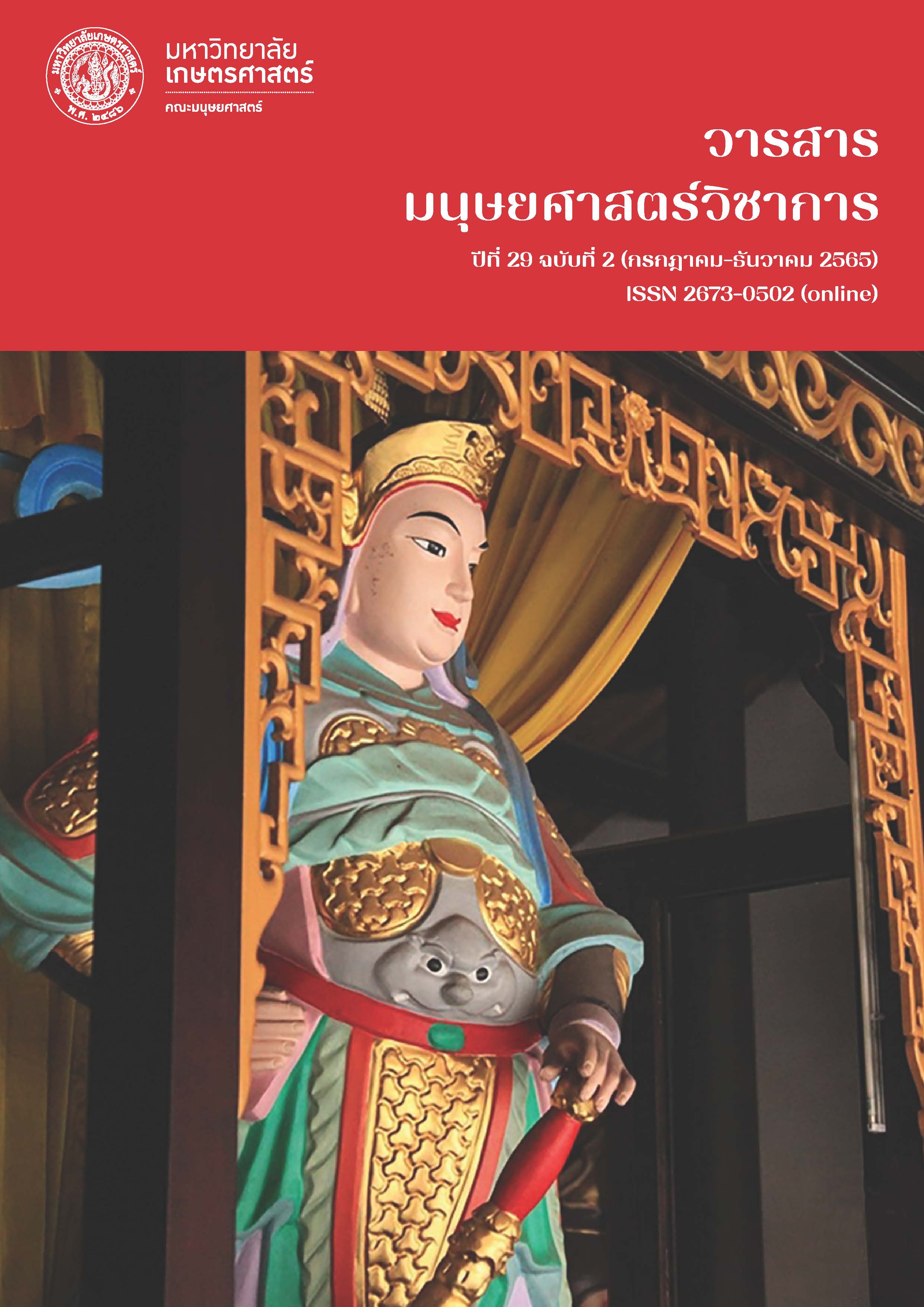Linguistic Variation: English Variation in Karen Ethnicity
Main Article Content
Abstract
The variation in the English language has changed in its system from the old English language to the modern English language caused by users in different languages and different dialects. The English features of each accent are different in a variety of English accents. At the beginning the English language in early era was used as an original English; after that it expanded across the continents, as well as becoming a second language and foreign language used in Asia. Regarding the diversity of the English language used in Asia, the group of multi-ethnic language users who have their own mother tongue was the main social variable which caused variation in the English language, when it became an English accent for each group. The purpose of this article is to present the theory of language variation which could explain the variation in the English language, English grouping, and the variation of English in Asian countries, as well as exploring how the English language has been changed in English language used by the Karen ethnicity in Thailand. Linguistic features of the Karen language and the English language are different leading to code-mixing and style shifting of the language characteristics of the English language used by the Karen. This eventually leads to an emergence of the Karen English accent.
Article Details

This work is licensed under a Creative Commons Attribution-NonCommercial-NoDerivatives 4.0 International License.
References
ดียู ศรีนราวัฒน์ และชลธิชา บำรุงรักษ์. (2558). ภาษาและภาษาศาสตร์. กรุงเทพฯ: มหาวิทยาลัยธรรมศาสตร์.
Bell, A., Sharma D., & Britain, D. (2016). Labov in Sociolinguistics: An Introduction. Journal of Sociolinguistics, 20(4), 1-9.
Edwards, J. H. (2016). Sociolinguistic Variation in Asian English: The Case of Coronal Stop Deletion.
English World-Wide, 37(2), 138-167.
Hazen, K. (2010). Labov: Language variation and change. Research Gate of West Virgnia University, 23-39. Retrieved from https://www.researchgate.net/publication/293091756.
Intajamornrak, C. (2012). Variation and change of the Phrae Pwo Karen vowels and tones induced by
Language contact with the Tai language. MANUSYA; Journal of Humanities Regular, 15(2), 1-20.
Kachru, Y. & Nelson, C. (2006). Asian Englishes Today: World Englishes in Asian Contexts. Hong Kong:
Hong Kong University Press.
Kiesling, S. (2004). A variable, a style, a stance: Word-final-er and ethnicity in Australian English. Australia. Retrieved from https://www.academia.edu/2699018/A_variable_a_style_a_stance_Word_final_er_and _ethnicity_ in_Australian_English.
Kirkpatrick, A. (2010). The Routledge Handbook of World Englishes. USA: Routledge.
Labov, W. (1972). Sociolinguistic Patterns. Philadelphia: University of Pensylvania Press.
Manson, K. (2011). The Subgrouping of Karen Languages. Paper presented at the 21st Southeast Asian Linguistics Society, Bangkok.
Reyes, A. (2010). Language and Ethnicity. In N. Hornberger & S. McKay, (Series Ed.), Sociolinguistics and Language Education (pp. 398-426). UK: Short Run Press.
Rogers, U. (2013). Thai English as a Variety (Doctoral Dissertation in Philosophy), Ariisona State University, Arisona.
Singhasak, P. & Methitham, P. (2016). Non-native English Varieties: Thainess in English Narratives.
English Language Teaching, 9(4), 128-138.
Stell G. (2010). Ethnicity in Linguistic Variation: White and Coloured Identities in Afrikaans-English
Code-Switching. International Pragmatics Association, 20(3), 425-447.
Trudgill, P. (1995). Sociolinguistics: An introduction to language and society (3rd ed.). England: Clays Ltd.
Vu, P. (2012). English in Southeast Asian Countries. Literature. Retrieved from https://dumas.ccsd.cnrs.fr/dumas-00931949.
Wardhaugh, R. (1992). An Introduction to Sociolinguistics. Cambridge, MA: Blackwell.
Wardhaugh, R. (2006). An Introduction to Sociolinguistics. New York: Wiley-Blackwell.
Wong, A. (2007). Two Vernacular Features in the English of Four American-Born Chinese in New York City. University of Pennsylvania Working Papers in Linguistics, 13(2), 215-230.


